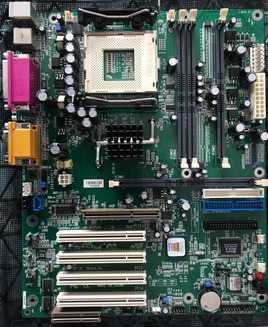First post, by AbsolutelyFree
- Rank
- Newbie
Hello all,
I am putting together a 486 system. My family had one when I was a kid, but we got rid of it before I was old enough to really understand what I was doing with a computer. I am good with hardware from ATX standard and onwards, but AT era stuff is new to me. I am noticing something odd and having trouble finding an explanation in my own research.
I have a few ATX power supplies that are from the late 90s/early 2000s that seem to work just fine with my PSU tester. The two that I am thinking of specifically have a single one of the 6 pin AT power connectors that plug into an AT style motherboard. What is the point of that single 1 connector? As far as I can tell, motherboards all the way back to the 8086 days required 2 of the AT style connectors. All AT PSUs have 2 AT power connectors for the motherboards, as do all of the ATX to AT adapters I have seen. Was the single connector on some early ATX PSUs for some kind of peripheral or something?

